|
|
|
Sort Order |
|
|
|
Items / Page
|
|
|
|
|
|
|
| Srl | Item |
| 1 |
ID:
185848
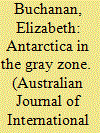

|
|
|
|
|
| Summary/Abstract |
All appears quiet on Australia’s southern front – Antarctica. The continent remains a beacon of cooperation, home to a continued system of international governance and scientific engagement, lauded as a political win from the depths of the Cold War. Beneath the surface, however, this article argues that strategic competition is now building. In Antarctica, this competition takes the form of gray zone activities. This article argues that the proliferation of gray zone challenges could jeopardize the future of the Antarctic Treaty System (ATS). This article analyses gray zone activity in Antarctica and highlights the growing complexity Australia faces, as Canberra pursues the dual objectives of protecting Australia’s territorial claim to the Australian Antarctic Territory (AAT) and bolstering the ATS.
|
|
|
|
|
|
|
|
|
|
|
|
|
|
|
|
| 2 |
ID:
155272
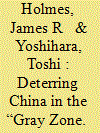

|
|
|
|
|
| Summary/Abstract |
If facing down a hostile actor in the “gray zone” is hard for a single actor, such as the United States, it is doubly hard for an alliance composed of actors with disparate capabilities, interests, and political fortitude. This article investigates how China has prosecuted gray-zone strategy in the South China Sea. We discern patterns in Chinese policy and strategy with the aim of helping U.S. led alliances face down aggression in maritime Asia.
|
|
|
|
|
|
|
|
|
|
|
|
|
|
|
|
| 3 |
ID:
164486
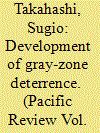

|
|
|
|
|
| Summary/Abstract |
In contemporary international security, some powers try to challenge the status quo through gradual, sub-threshold expansion without resorting to the explicit use of force. Examples of such sub-threshold challenges can be seen in the East China Sea, the South China Sea, and Eastern Europe. They are now referred to as ‘gray zone’ or ‘hybrid threat’. For a long time deterrence theory, a core component of strategic studies, has largely neglected such sub-threshold challenges. The exceptional part of that is empirical school’s findings, including fait accompli, limited probe, and controlled pressure. They perfectly match with the current threats and help developing conceptual framework to deter these kind of threats. Based on these findings, this paper attempted to illustrate three principles for gray zone deterrence: combination of deterrence by denial and deterrence by punishment, mobilization of the whole government assets, and keeping open the window to escalation and analyze, Japan’s efforts to develop conceptual framework for gray zone deterrence. Since Japan’s efforts to develop conceptual framework of gray zone deterrence dates further back than other part of the world, as the National Defense Program Guidelines (NDPG) of 2010, a case study on Japan would provide useful insights for gray zone deterrence.
|
|
|
|
|
|
|
|
|
|
|
|
|
|
|
|
| 4 |
ID:
095050
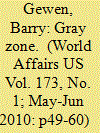

|
|
|
| 5 |
ID:
178551
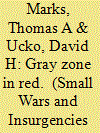

|
|
|
|
|
| Summary/Abstract |
With the United States having shifted its defense emphasis to peer and near-peer rivals, study of irregular warfare has likewise expanded its scope to applicable lessons for the strategic level, within the context of great-power competition. In theory, meanwhile, concern for sub-state actors remains an integral mission for the Department of Defense (DoD), with formal tasking issued to integrate into joint professional military education (JPME) the insights drawn from the last two decades of commitment. The resulting synthesis has led to a discussion of what has variously been termed gray zone conflict, hybrid war, or political warfare.
|
|
|
|
|
|
|
|
|
|
|
|
|
|
|
|
| 6 |
ID:
181375


|
|
|
|
|
| Summary/Abstract |
This paper analyzes US conceptual documents that define the strategies of creating and using so-called "gray zones" against Russia, its allies and partners, as well as transformational trends in the contemporary operational space of hybrid warfare. It also proposes certain measures for neutralizing hybrid threats and challenges to Russia's national security.
|
|
|
|
|
|
|
|
|
|
|
|
|
|
|
|
| 7 |
ID:
181376
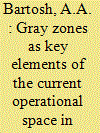

|
|
|
|
|
| Summary/Abstract |
This paper analyzes US conceptual documents that define the strategies of creating and using so-called "gray zones" against Russia, its allies and partners, as well as transformational trends in the contemporary operational space of hybrid warfare. It also proposes certain measures for neutralizing hybrid threats and challenges to Russia's national security.
|
|
|
|
|
|
|
|
|
|
|
|
|
|
|
|
| 8 |
ID:
181219
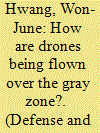

|
|
|
|
|
| Summary/Abstract |
Drones have been affecting many areas since their advent, including conflicts between states. Used as a coercive measure, how they are flown by measured or limited revisionists can be understood in terms of the gray zone strategy. The concept of the gray zone is somewhere between peace and war, and the gray zone strategy enables revisionists to gradually alter the status quo without triggering war or overt conflict. Both theoretically and empirically, drones could be a useful tool in gray zone conflicts. This paper attempts to specify and organise such operations according to the question: “How are drones being flown over the gray zone?” Revisionist states fly drones based on the salami tactic, or feigned innocence, or by putting them in the hands of proxy forces to expand gradually their interests and destabilise troubled regions; therefore, understanding drone strategy and considering counter-measures are indispensable for securing stability in such regions.
|
|
|
|
|
|
|
|
|
|
|
|
|
|
|
|
| 9 |
ID:
178555
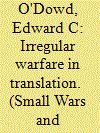

|
|
|
|
|
| Summary/Abstract |
Past efforts by the United States to understand Chinese strategic thought in irregular warfare have relied heavily upon translation. Samuel B. Griffith, a decorated combat veteran, was particularly important in this regard, having served in China even as Mao Zedong emerged. It was the Vietnam War which focused attention on Griffith’s work, even as the same war was tapped by China in its own effort to understand the guerrilla warfare of a new era. Lessons from the Vietnamese struggle against the Americans were carefully assessed for a possible face-off, ironically, not with Washington but with Moscow.
|
|
|
|
|
|
|
|
|
|
|
|
|
|
|
|
| 10 |
ID:
154332
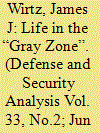

|
|
|
|
|
| Summary/Abstract |
The term “Gray Zone” is gaining in popularity as a way of describing contemporary security challenges. This article describes the “short-of-war” strategies – the fait accompli, proxy warfare, and the exploitation of ambiguous deterrence situations, i.e. “salami tactics” – that are captured by the term and offers several explanations for why state and non-state actors are drawn to these strategies. The analysis highlights why defense postures based on deterrence are especially vulnerable to the short-of-war strategies that populate the “Gray Zone.” The article concludes by suggesting how defense officials might adapt defense policies to life in the “Gray Zone.”
|
|
|
|
|
|
|
|
|
|
|
|
|
|
|
|
| 11 |
ID:
185894
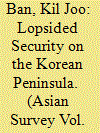

|
|
|
|
|
| Summary/Abstract |
North Korea’s asymmetric provocations over the last decades can be classified into two periods: tactical provocations at sea in 1970–1990 and strategic (nuclear) provocations in 2000–2020. What is the logic underlying the North Korean imbroglio? And how does the former period differ from the latter? The first set of provocations was intended to shift the threat imbalance caused by a widening gap in conventional military capabilities into a balance of insecurity, where the weaker North Korean side faced South Korea and the combined ROK–US forces. The second set was intended to shift the balance of insecurity into an imbalance of terror while ensuring that only Pyongyang would be armed with nuclear weapons in the area. The “gray zone” discourse of the denuclearization of the Korean Peninsula (rather than North Korea) ended up bolstering North Korea’s nuclear program, while South Korea intensified only its conventional weapons program.
|
|
|
|
|
|
|
|
|
|
|
|
|
|
|
|
| 12 |
ID:
185260
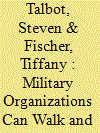

|
|
|
|
|
| Summary/Abstract |
This article is a response to a recent publication by Hasselbladh and Ydén in this journal, entitled “Why Military Organizations Are Cautious About Organizational Learning?” Through their use of dichotomous logic, the authors argue continuous learning poses a threat to the functioning of military organizations. The following commentary argues for a necessary coexistence between the mainstays of the traditional bureaucratic military organization presented by Hasselbladh and Ydén and continuous learning required by military organizations to compete and cope with technological advancements and gray zone challenges afforded by the modern operating environment.
|
|
|
|
|
|
|
|
|
|
|
|
|
|
|
|
| 13 |
ID:
175668
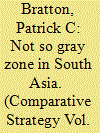

|
|
|
|
|
| Summary/Abstract |
India’s recent military responses to terrorist attacks, indicate a new phase in the “ugly stability” of nuclear South Asia. In the past, both India and Pakistan have often used tacit cooperation through the use of “gray zone” approaches – in which states use coercive methods short of warfare to secure their goals – to reduce the dangers of escalation. In recent years it appears that India will no longer only rely on gray zone approaches in response to Pakistan’s provocations.
|
|
|
|
|
|
|
|
|
|
|
|
|
|
|
|
| 14 |
ID:
165184
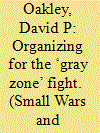

|
|
|
|
|
| Summary/Abstract |
Despite its portrayal as something new, the concept of the ‘gray zone’ is not novel. It was the Cold War battleground in which the USA and the Soviet Union waged rival unconventional campaigns, and it was there that the newly formed Central Intelligence Agency (CIA) was given responsibility for operating. This was not the organization’s original purpose, but Cold War exigencies forced Washington to improvise and build an organization with unique capabilities. These early years shaped the CIA’s operations directorate, creating two distinct cultures within the larger agency, one focused on intelligence collection and the other focused on covert action.
|
|
|
|
|
|
|
|
|
|
|
|
|
|
|
|
| 15 |
ID:
178553
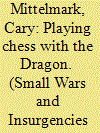

|
|
|
|
|
| Summary/Abstract |
Having engaged in some two decades of irregular war, the United States now finds itself confronted by a resurgent China, determined to utilize asymmetric approaches to both strengthen its grip on power at home and reshape the international environment in its favor. Despite the parameters of Beijing’s strategy having been clearly laid out, Washington has failed to respond in coherent fashion. This reality should be altered by constructing a revitalized approach upon the foundation already put in place through the country’s long, extensive experience in irregular warfare.
|
|
|
|
|
|
|
|
|
|
|
|
|
|
|
|
| 16 |
ID:
159148
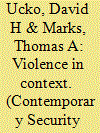

|
|
|
|
|
| Summary/Abstract |
The malaise that the United States, and the West, have experienced in recent campaigns stems in large part from unclear thinking about war, its political essence, and the strategies needed to join the two. Instead, analysis and response are predicated on entrenched theoretical concepts with limited practical utility. The inadequacy of understanding has spawned new, and not so new, terms to capture unanticipated trends, starting with the re-discovery of “insurgency” and “counterinsurgency” and leading to discussion of “hybrid threats” and “gray-zone” operations. New terminology can help, but the change must go deeper. Challenging analytical orthodoxy, this article sets out a unifying approach for the study of political violence, or more accurately: violent politics. It provides a conceptual foundation that helps to make sense of recent shifts in warfare. In effect, it offers sorely needed theoretical insights into the nature of strategy and guides the process of responding to nontraditional threats.
|
|
|
|
|
|
|
|
|
|
|
|
|
|
|
|
| 17 |
ID:
182020
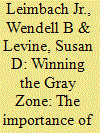

|
|
|
|
|
| Summary/Abstract |
While the United States must always be ready to prevail during a high-end conflict --and overwhelming lethality represents a significant deterrent to conflict in the first place --the Nation must also be able to overwhelmingly compete and deter activity short of traditional armed conflict. In the language of emerging Joint Doctrine, this is known as the “Competition Below Armed Conflict” portion of the “Competition Continuum.” It is also referred to as the Gray Zone, Hybrid Warfare or Irregular Warfare. Winning in the Gray Zone means completing the “deterrence equation,” that is, precluding adversary aggression in competition below armed conflict with intermediate force capabilities (IFCs) in a manner similar to equipping the U.S. military element of national power with overwhelming lethality as a deterrent to armed conflict. IFCs, which include non-lethal weapons as well as other non-lethal tools, will bridge the gap that exists between a mission of mere presence and the use of lethal effects. These capabilities allow active measures when presence alone is insufficient to deter malign activities or when the use of lethal or destructive force is neither desired nor appropriate. The addition of IFCs to the Joint Force’s toolkit will help the Services maintain a decisive advantage over strategic competitors, in addition to the lethal force that is the hallmark of the U.S. military.
|
|
|
|
|
|
|
|
|
|
|
|
|
|
|
|
|
|
|
|
|